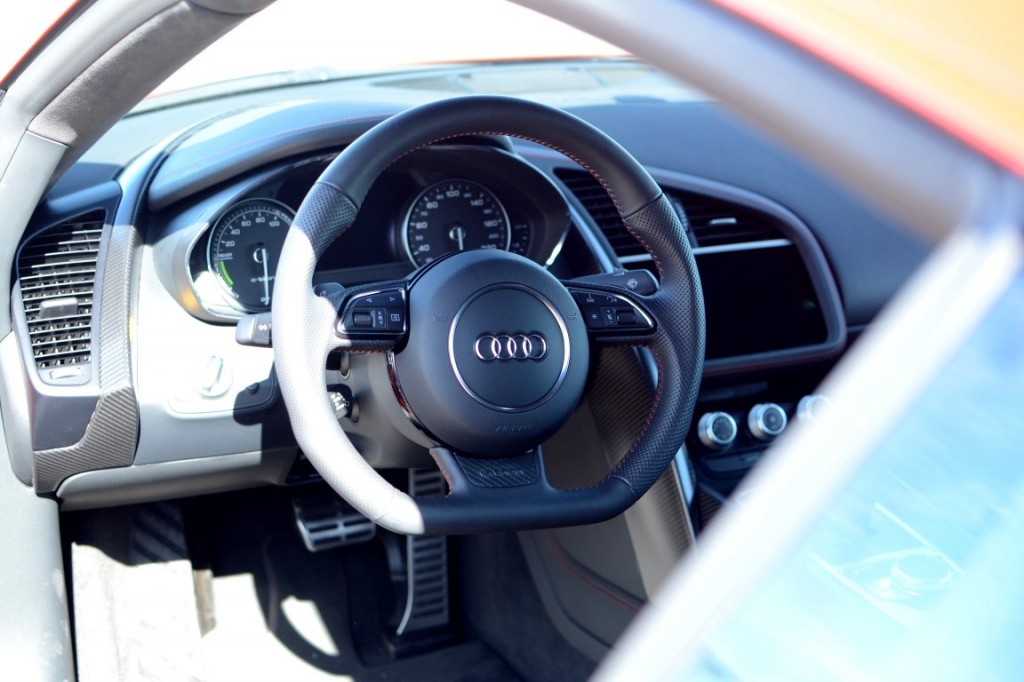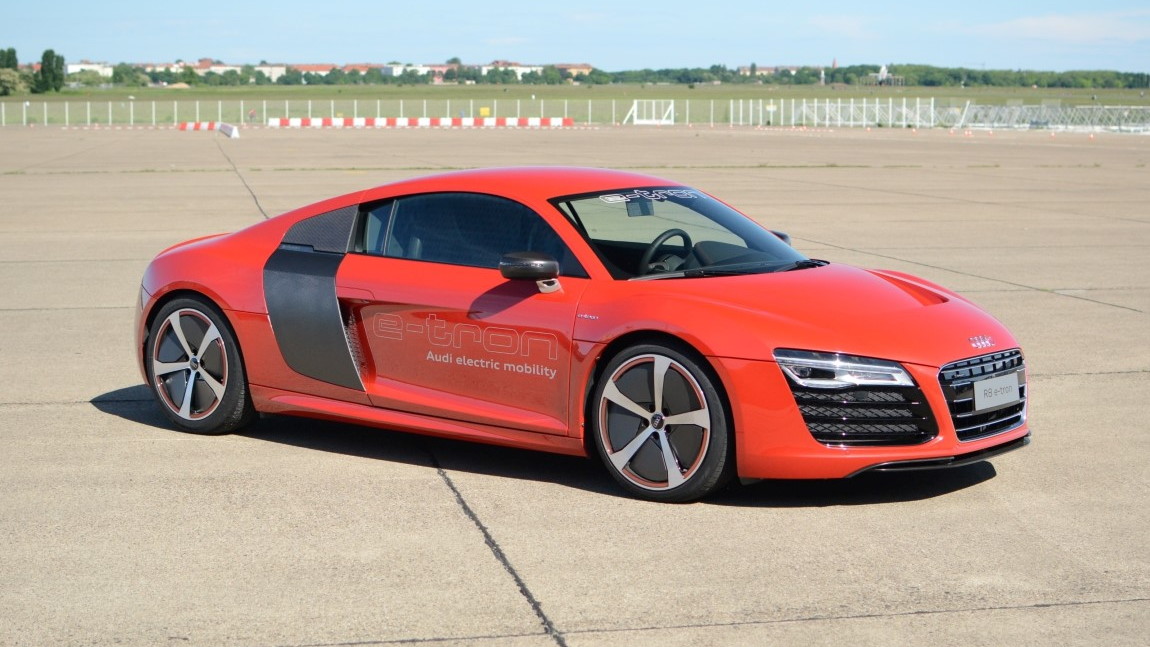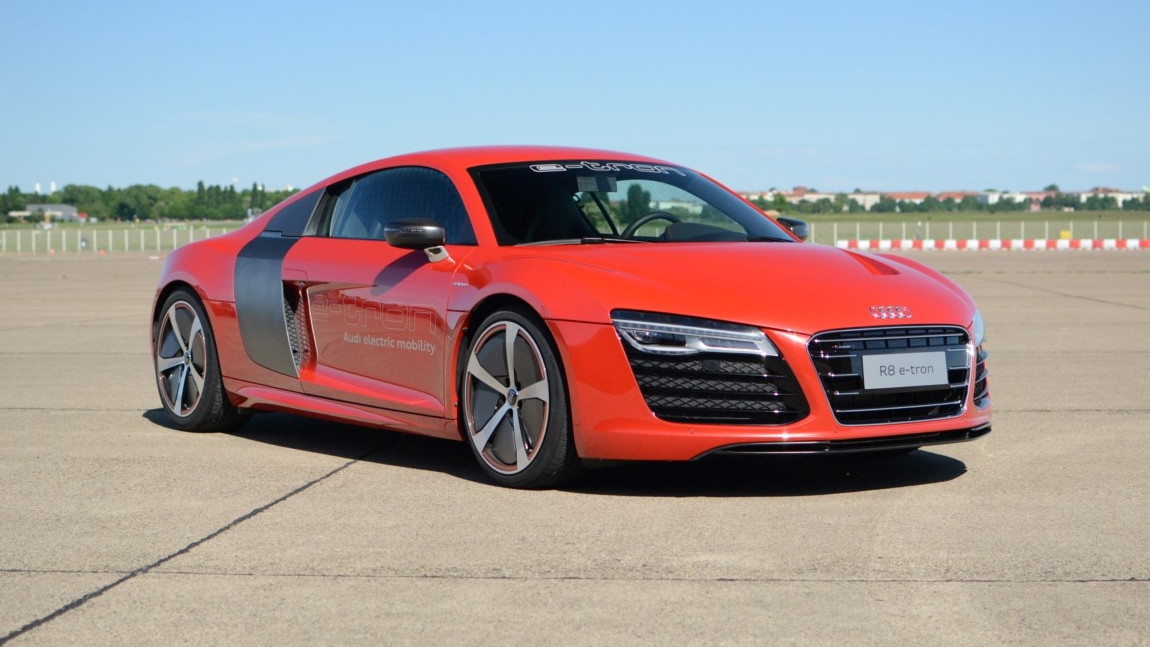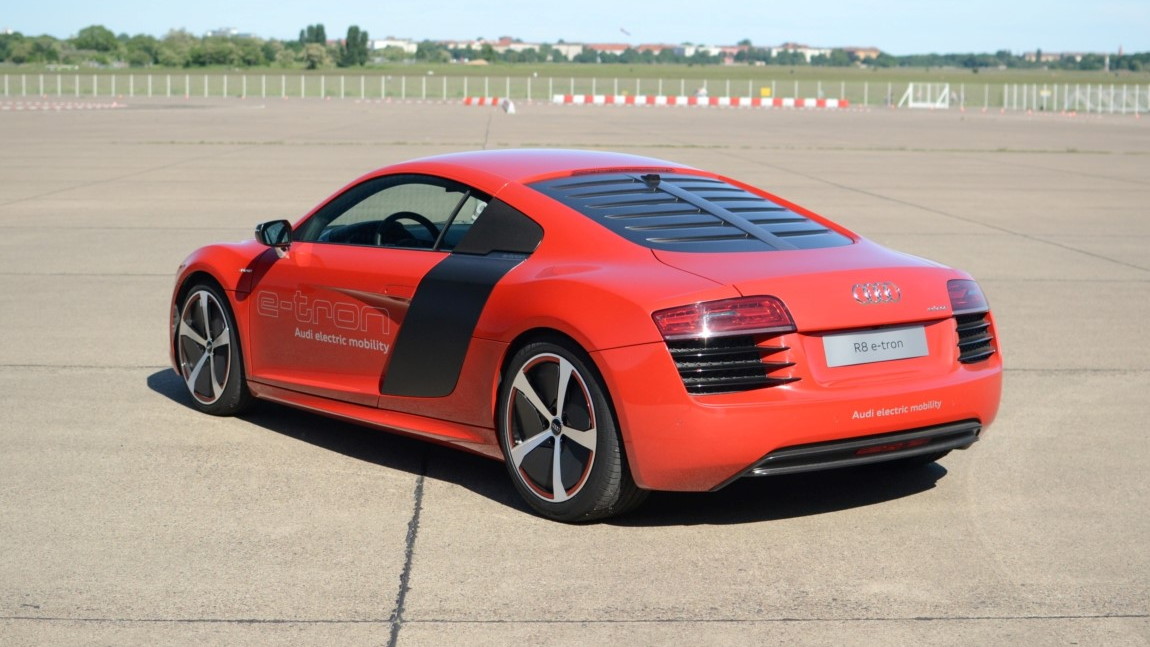And even if it did, it'd be well beyond the reach of mere mortals--rumor has it that each of the ten e-trons currently in existence have set Audi back around $1.3 million.
All of which is a great pity, because our track-based first drive of the R8 e-tron at Berlin's Tempelhof airfield shows that Audi really does understand electric cars--even if it's less keen on the economics of producing them.
Thorough engineering
The R8 e-tron looks very much like the regular gasoline R8s on which it's based, but under the skin the cars are wildly different.
Naturally, the power source is far removed from the V-8 and V-10s normally found in R8 models. It's actually the least powerful R8 yet, its two 140 kW electric motors equating to a 374-horsepower maximum.
More telling is the e-tron's 605 lb-ft torque figure--around a third greater than a Tesla Model S Performance, with its 443 lb-ft output.
To accommodate the 48.6 kilowatt-hour lithium-ion battery pack, the R8's chassis has been substantially redesigned. The T-shaped pack sits along the car's center tunnel and then upright behind the passenger compartment, the electric drivetrain sitting aft of this and powering the rear wheels alone.
Light weight and aerodynamics were high priorities. Much of the bodywork is now carbon fiber, shedding 50 lbs from the body-in-white.

Audi R8 e-tron, technical details
Unique glass-fiber reinforced plastic springs--more durable than their steel equivalents, apparently--save 40 percent compared to steel, and titanium rear wheel hubs also save weight. The car's total weight is just over 3,900 lbs.
H-rated tires--good for the car's lower top speed (described below) reduce rolling resistance yet offer plenty of grip, and save 4.4 lbs per corner.
The wheels are clever too--carbon fiber flaps mounted between the spokes close with centrifugal force at 30 mph, reducing the car's coefficient of drag by 0.02, for a total 0.27.
And on the "gee, look at that!" side, there's Audi's pioneering organic LED (OLED) rear-view mirror--weird at first, but very cool.
The numbers
To continue the Model S comparisons (as a suitable performance benchmark) 62 mph arrives in 4.2 seconds to the Tesla's 4.4, and top speed is limited to 124 mph, just shy of the 130-odd achievable in the Model S Performance.
Overall range is a so-so 133 miles, limited by how much battery Audi could cram in to the R8's frame. It's also one of Audi's numerous reasons for not making the car--they're simply not happy with 133 miles.
Incidentally, that top speed and the range are closely related. Audi told us that the e-tron uses 90 kilowatts of power at about 135 mph, which would drain the battery in 20-30 minutes. The 124 mph top speed at least ensures more than half an hour of Autobahn-style driving...

Audi R8 e-tron track drive, Berlin Tempelhof Airport
On track
The R8 e-tron is quite remarkable to drive, particularly when given the relative freedom of a coned-off course on the large concrete apron of a disused airport.
Acceleration is relentless, at least as far as the 70-80 mph maximum we could attain on the short circuit. With no gear-changes to disturb progress you just sink the right-hand pedal and go. While the e-tron lacks a regular R8's all-wheel drive system, it simply doesn't need it--there's huge traction from those semi-eco tires.
The brakes are awesomely capable too.
Most braking is done with the rear, either through the motor's regenerative effect, or if you're braking hard (and we were), electronically-actuated rear calipers. Transition between electric and friction braking was essentially seamless--not always the case with electric cars and hybrids.
So effective is the regenerative effect (adjustable in stages using steering wheel-mounted paddles), that after the car's Nürburgring lap record set earlier this year, the rear brakes were cool enough to touch. Do that with regular brakes and the doctors would have to surgically remove your hand from the rotor...
The e-tron's electric power steering offers plenty of feedback and there's great balance in the chassis too.
Torque vectoring of the motors constantly adjusts the power to each rear wheel, helping you nail every apex. The car's corner-hunting becomes ever more lively as you switch between Efficiency, Auto and Dynamic modes.

Audi R8 e-tron track drive, Berlin Tempelhof Airport
Turn the stability control down and the car's sharp responses and huge torque can see you hang the tail loose quite happily--thankfully, easy enough to catch.
And it's not as silent as you'd expect. Audi actually pumps a distinctive--but not unpleasant--electric car hum into the cabin as you accelerate, giving useful, but not intrusive, aural feedback of just how hard you're working the car.
Addictive
As any owner of a powerful electric car will tell you, the car's instant reponses and huge, uninterrupted performance quickly become addictive.
Offered a tantalizing but all-too-brief taster of such performance, it's also a little depressing realizing that Audi won't now put the car into production--it's simply too good to go to waste.
Except it won't be going to waste, really. Some of the R8 e-tron's technology will be seen in the A3 e-tron which is going on sale, and other elements will make their way into future R8 models and hopefully, other electric sports cars.
And the very best thing about the R8 e-tron is that it's yet more proof that electric sports cars can be every bit as exciting as their combustion cousins.
Audi provided airfare, lodging, meals and refreshments to enable us to bring you this first-person drive report
_______________________________________________________
Follow GreenCarReports on Facebook, Twitter, Instagram and Google+




















